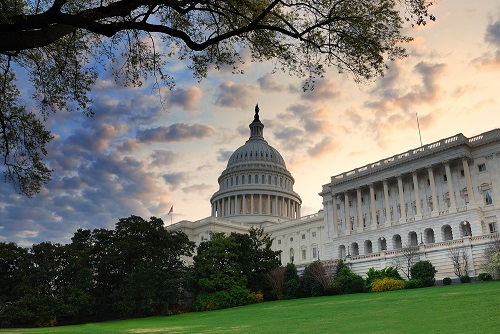If you’re travelling to the United States for a short period of time, you may not be worried about obtaining medication. On the other hand, if you’re planning to stay long-term, then it’s vital that you give your access to medication some thought.
Very few pharmacies in the US can fill foreign prescriptions, although this is determined on a state-by-state basis. So, if you’re planning on obtaining medication whilst in the United States, you’ll first need to register with a local healthcare provider.
This article will take you through what you need to know regarding prescriptions in the USA.
How to fill your prescription
When you travel to the USA, you’ll want to ensure that you have enough medication for at least a month. This will tide you over, until you can restock. When you arrive, locate your closest healthcare provider, obtain a prescription, and find a pharmacy. You can then retrieve your medication. Leave some buffer room, in case there are any unforeseen circumstances. For example, there may be closed pharmacies, lengthy registration processes or long waiting times for a particular medication.
You may be able to take more than a one-month supply with you – the FDA typically says that up to 90 days’ worth is allowed. However, this will depend upon what the medication is, as the US has strict laws about which medicines can be brought into the country, as well as in what quantities.
If you are travelling with medication, then it must be in its original bottle or packaging. It should also have your doctor’s instructions clearly printed on it. You must obtain a prescription or note from your doctor, too, as proof that the medication is for personal use. Anybody travelling without this will likely have their medication seized at the airport by customs.

Almost all prescription medications can be found in the US, and there are numerous pharmacies dotted throughout the cities. They’re typically found in drug stores, department stores and grocery stores, but you can also locate them in medical clinics and hospitals. Opening hours vary, but typically they operate between 9 a.m. and 9 p.m., seven days a week.
Getting the right medical care
If you’re working more than 30 hours a week for an employer with over 50 members of staff, you may be entitled to health insurance through your job. The level of insurance provided will depend upon your employer, but the most common type is co-pay, where you and your employer share the insurance costs.
If not, you have other options, but it’s incredibly important to get your health insurance set up sooner, rather than later. This is due to how costly medication and medical treatment is in the US.
Your health insurance costs will be determined by:
- Your age
- Where you live
- Your health history, including whether you have any pre-existing conditions
- Your family’s medical history
- Your lifestyle—for example, your fitness levels, whether you smoke etc.
There are various types of health insurance in the US, each with their own conditions and exclusions. But the system is typically categorised by Healthcare Management Organisations (HMO) and Preferred Provider Organisations (PPO). Each of these provides discounts for medical treatment and medications, to those who are registered to their medical network.
However, a lot of expats tend to go for an Individual Private Medical Insurance (IPMI) policy, as it offers more flexibility and better coverage. It also isn’t tied to one country. However, you should be careful when looking for private health insurance. Whilst many policies for expats offer comprehensive coverage, there are usually caps on medical treatments, and costs in America can add up quickly.
Therefore, you should ensure that your medical cover is in the high millions. This may seem extreme, but when you realise that heart surgery can cost around $200,000, that brain surgery can cost around $150,000, and that painkillers, scans and overnight stays in hospital etc. are all billed separately, you’ll see how quickly prices can add up.

How much you will have to pay will depend upon your insurance type. For example, an ACA-approved insurance plan that includes dental, optical and a voluntary excess will cost around $16,000 per year. Meanwhile, an ACA-approved insurance plan that includes dental, optical and doesn’t have a deductible will cost around $22,000 per year. Alternatively, you could go for a non-ACA-approved insurance plan that includes dental and optical, which will cost between $9,000 and $12,500 per year. A non-ACA-approved insurance plan that doesn’t include dental or optical will cost between $7,500 and $10,500 per year.
It’s no secret that America has some of the highest healthcare costs in the world, but health insurance definitely helps ease the financial strain of paying for it. Nonetheless, whilst health insurance can be helpful, it’s important to note that it only offers partial protection. Because of this, you should consider having additional savings in place (if possible). This will cover you if something happens and costs more than previously anticipated or budgeted for.
How much do prescriptions cost?
The cost of medication varies, depending upon the type and quantity you need, as well as the type of insurance you have. If you’re paying for it out of pocket, though, then it can get expensive. Americans reportedly pay, on average, around $1200 per year for prescriptions, according to Bloomberg.
Expats with private health insurance that covers prescription medication will be able to pay the costs and claim them back from their insurer at a later date. If this applies to you, then make sure you save your receipts.
Overall, which of the following you choose to obtain is up to you:
- A state-run insurance policy
- Insurance through your employer
- Your own policy, approved by the Affordable Care Act
- A private health insurance policy
Whichever you choose, it’s important to check the small print to see which, if any, costs are applicable to you. In most cases, the insurance company will cover the cost of prescription medication directly, with patients paying a nominal fee for the drug if it’s listed under a brand name. However, under certain policies, patients may have to pay until they reach their deductible—which is often set at around $1,000 to $2,000.

